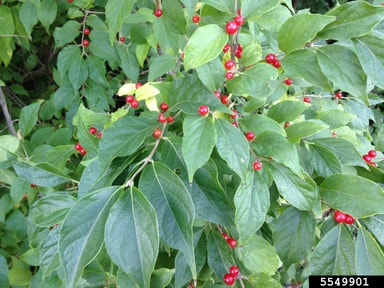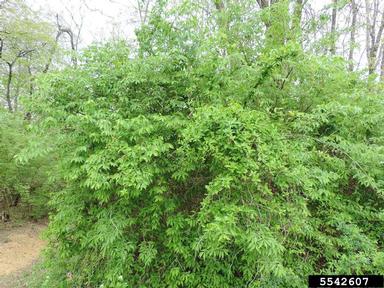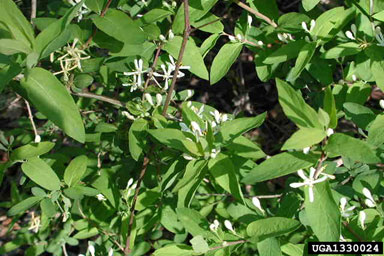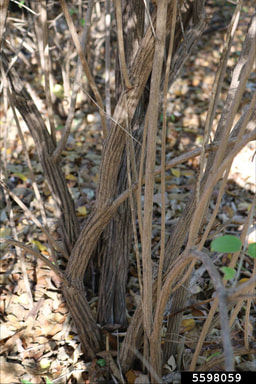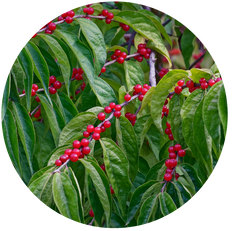|
Non-Native Bush Honeysuckles
Lonicera fragrantissima, L. maackii, L. morrowii, L. tatarica, L. xbella, L. xylosteum Non-native bush honeysuckles are categorized together because they are very similar in appearance and invasive qualities. While there are some native varieties of honeysuckle, most typically do not grow as large as the non-natives - up to 15 feet tall!
Bush honeysuckles are incredibly widespread in Michigan and throughout the Great Lakes region. Encouraged as a landscape addition and later as a method to combat erosion, seeds were rapidly dispersed. Unfortunately, they are tolerant of many soil types and light conditions meaning they can now be found in a variety of different habitats. That being said, they are often found along forest edges or in large, disturbed areas where they have grown to form a very dense monoculture. Because honeysuckles form their leaves earlier in the season and keep them longer, they have an advantage over native species trying to grow in the same habitat. Additionally their incredible fruit production allows for constant (and far spread). Photo credits: Chris Evans, University of Illinois, Bugwood.org | Richard Gardner, bugwood.org | Ryan Armbrust, Kansas Forest Service, bugwood.org |
Learn More About Non-Native Bush Honeysuckles:
|
Honeysuckle Facts
Management Options
|
|
Created by the Northwest Michigan Invasive Species Network
|
Go Beyond Beauty is funded by the Michigan Invasive Species Grant Program (MISGP)
|

